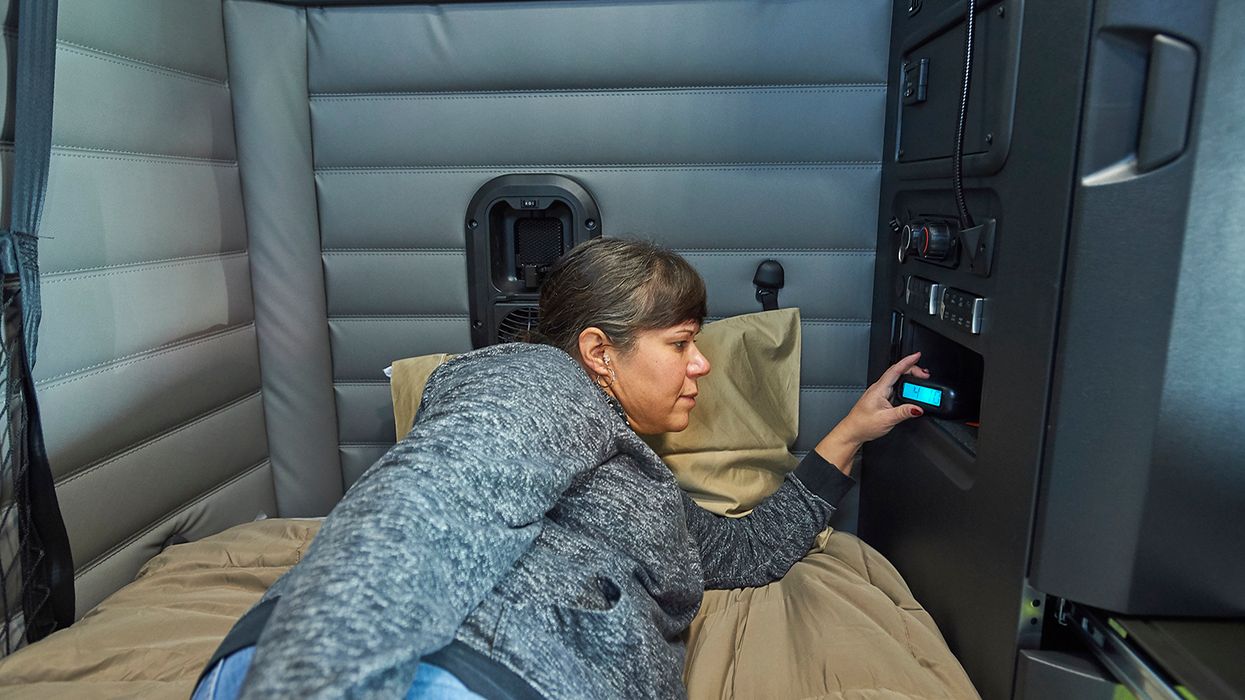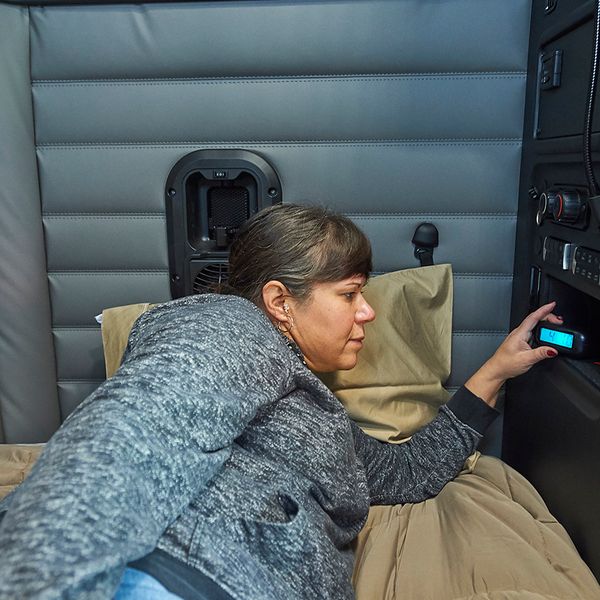5 things to know about the split-sleeper option
Hours-of-service (HOS) infractions continue to make up a large percentage of all truck driver violations, and sleeper berths may have something to do with that.
Drivers who try to split apart their mandatory 10-hour breaks using the “split-sleeper” option often land in hot water. That’s not surprising, because it’s one of the most complex provisions found in the HOS regulations.
Do your drivers know all the ins and outs of the split-break rule? Though not a full explanation of how the rule works, here are five important things your long-haul drivers may not know.
| The rule in a nutshell The split-sleeper rule in 49 CFR 395.1(g) allows drivers with a sleeper berth to “split” their 10-hour break into two separate breaks, with driving or other on-duty time in between. To qualify, one break must be at least seven hours in a sleeper berth, the other must be at least two hours off, and the two breaks together must add up to at least 10 hours total (e.g., 7 3, 8 2, 4 9, etc.). Neither break counts against the 14-hour calculation. After the second break, however, compliance with the 11- and 14-hour limits is recalculated starting at the end of the first break (i.e., completing a “split” break does not result in a full allowance of time the way a 10-consecutive-hour break would). |
- One break is at least 7 hours in a sleeper berth, and
- The other break is at least 2 hours spent off duty, in a sleeper berth, or using a combination of both; and
- The two breaks added together are at least 10 hours long.
This means that a 10-hour break can serve double-duty: it can reset the daily 11- and 14-hour limits AND serve as a qualifying break for the split-sleeper option.
2. A mid-day break can pause the clock. Drivers may use a relatively short mid-day break to “pause” the 14-hour clock when using the split-sleeper option.
For example, a driver who starts the day at 7:00 a.m. could spend 2 hours off duty in the middle of the day and continue to work and drive (up to 11 hours) until 11:00 p.m., which is 2 hours beyond the normal 14-hour limit. In this scenario, however, the driver must then “complete the split” by getting at least 8 hours in a sleeper berth, even if the driver arrived home.
Another example: A driver spends 10 or more hours in a sleeper berth before going on duty at 7:00 a.m. In the middle of the day, the driver spends 3 hours off duty, which pauses the 14-hour clock for 3 hours (when combined with the earlier sleeper-berth period of “at least” 7 hours). This allows the driver to work and drive until midnight (3 hours beyond the normal 14-hour limit). At that point, the driver is free to go off duty for 10 hours or may do another “split” by getting at least 7 hours in a sleeper berth
| Learn more about sleeper-berth rules in our ez Explanation! |
3. The order doesn’t matter. The rules do not specify which break needs to be taken first. A driver may start with a 2- or 3-hour off-duty break, for example, followed by 7 or 8 hours in a sleeper berth, or vice versa: use the sleeper berth first and then take a shorter off-duty break.
4. The driver gets the benefit of the doubt. If a driver takes a midday break to pause the 14-hour clock (see #2 above) and is later stopped for an inspection after the 14th consecutive hour but before getting the second break, how will the officer know that the driver will be getting that second break later in the day (and thus is not already in violation)? That is, how will the officer know that the midday break should be excluded from the 14-hour count?
In that situation, the officer is expected to give the driver the benefit of the doubt and assume the driver will be getting the second break. However, drivers must make their intentions clear and be able to explain what they’re doing. If a driver says they’re not using the split-sleeper option, the officer will probably believe them and could issue a citation.
5. “Adjacent” break time can be excluded. It’s not unusual for a driver to spend a little time off duty before and/or after resting in a sleeper berth for 7 or more hours. If the sleeper-berth time will be part of a split-sleeper scenario, then that “adjacent” off-duty time may also be excluded from the 14-hour calculation.
For example, if a driver goes off duty for an hour, spends 7 hours in a sleeper berth, and then spends another hour off duty, all 9 hours may be excluded from the 14-hour limit when part of a split-sleeper scenario. (In this case, the key is making sure the sleeper-berth portion is at least 7 hours long.)
One final thing to know about the split-sleeper option, if not obvious already: it’s complicated! Spend time reviewing the rules, explanations, and diagrams showing how the split-sleeper provision works before trying to explain it to drivers or using it yourself. Knowing all the ins and outs ahead of time can prevent violations out on the road.
Key to remember: Drivers frequently get in trouble trying to use the “split-sleeper” provision which allows them to break apart their 10-hour rest periods. Make sure you know all there is to know about the rule before putting it into practice.


















































